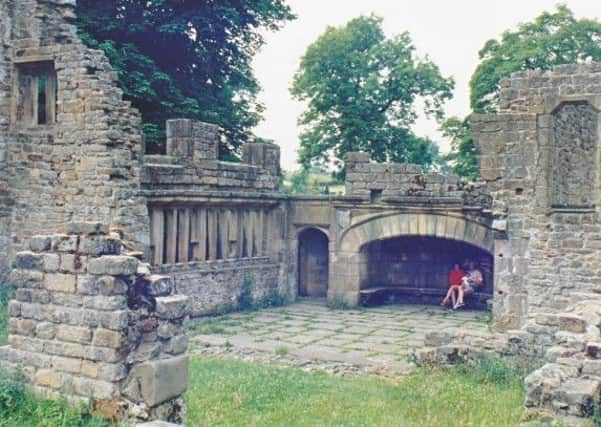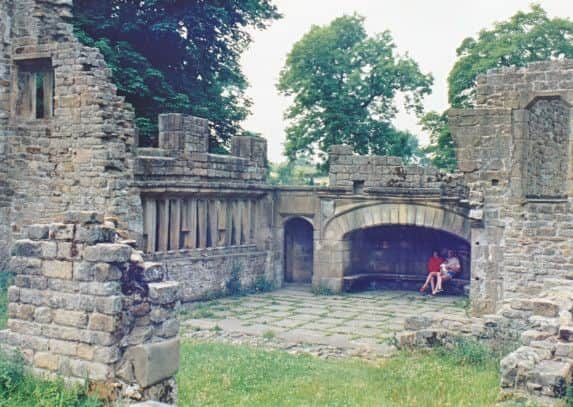Photos: Wycoller is a real gem to visit


Though I hope interesting, writing about mills can be a little confining. A taste of the open air and a much overdue visit to one of my favourite places will fit the bill.
Anything that is written about Wycoller must acknowledge a debt of gratitude to John Bentley whose splendid book on the village, and its surroundings, is a must for all visitors. The book was first published as long ago as 1975 by Nelson Local History Society. It has stood the test of time and at least one reprint has been published since, having the laudable object of raising money for an educational charity in the village. I am not sure whether the book is still in print but I hope it is and you avail yourself of a copy and read it before you make your way to Wycoller.
Advertisement
Hide AdAdvertisement
Hide AdThese days Wycoller is the centre of a country park run by Lancashire County Council. I know I have written, and said, some fairly uncomplimentary things about LCC, but at Wycoller they seem to have got it right. There is a good-sized car park, on your way in to the village from Trawden or Laneshaw Bridge, and level paths all the way into Wycoller.


When you get into the village there is the splendid café and craft centre, just before you get to the pack horse bridge. The last time I was in Wycoller, a few of the cottages had plants for sale at little stalls by their garden gates. In addition, you might find out when the old barn or coach house visitor centre is open. The building itself is worthy of your attention but, occasionally, there are small exhibitions in the building which can be very interesting.
I once indicated, after the success of a similar venture at Barrowford, I would have my collection of postcards of Wycoller enlarged and made available, with notes, for display in the centre. However, my offer was not taken up and I sold most of them to a collector who was very keen to have them.
I still have the duplicate cards, together with a few other images, and it is out of these that this article is compiled. I should add that much of the information comes from John’s book.
Advertisement
Hide AdAdvertisement
Hide AdWycoller is sometimes called the “Valley of the Seven Bridges” and John includes a map in his book which shows the walker where the bridges might be found. The bridges illustrated here constitute some of the oldest bridges in Lancashire. Particularly famous is the twin arched Packhorse Bridge, which you can see from both sides, but the other bridge, in the distance in two images, is the Clapper Bridge, one of two apparently similar bridges, the other being the Clam Bridge, but which are understood to be separated, in construction terms, by hundreds of years.
The Clapper Bridge might not be much more than 200 years old but the Clam Bridge, which was damaged by floods in 1989 and 1990, and restored in 1991, could be the best part of 1,000 years old.
Many people go to Wycoller to enjoy a walk in the countryside in the knowledge they will be able to get some refreshments at the café and craft centre. Others associate the ruined hall with the Ferndean Manor of Charlotte Bronte’s novel “Jane Eyre”. I have to admit I can’t read the Brontes’ works so my reason to visit the village is rather different.
Wycoller has a long and interesting history. The name means “wic among the alder trees” or “settlement among the alders”. “Wic” has been described as an early loan word from the Latin “vicus” which means dwelling, dwelling place, village or hamlet. At one time Wycoller was within the famous Forest of Trawden, not necessarily a very wooded area but an open area, one which was ideal for hunting.
Advertisement
Hide AdAdvertisement
Hide AdAt first the land for hunting was in the noble ownership of the de Lacy family and would, therefore, have been described as a chase rather than a forest. This latter word was adopted in 1399 when Henry IV, who through his father, had succeeded to the de Lacy lands, seized the throne from Richard II. From then, unit 1660, the “hunting forest” was in royal hands.
Hunting is only really practicable on relatively poor land and this was the case in Wycoller. However, there was some value in the land and it was attractive enough to keepers of cattle and sheep for them to want to farm the property. When more money could be had from keeping stock rather than rearing and hunting roe deer, much of the land was divided into small farms called vaccaries, literally “cattle farms”.
These vaccaries have left another landscape feature which survives to this day, the vaccary walls which are made out of stone flags rather than constructed in the more usual way. Recently, some work has been done by archaeologists associated with Pendle Heritage Centre and very interesting it has turned out to be.
By the 16th Century Wycoller had begun to grow into a small village, but hamlet might be a better word. There was a “big house”, Wycoller Hall, a number of farms close by and a few little cottages. The farmers and cottagers were dependent on pastoral farming, the production of wool and spinning and weaving.
Advertisement
Hide AdAdvertisement
Hide AdIn the 1820s there were about 350 people living in the valley, a number of them in the village. By this time many of the residents were handloom weavers and a number of their cottages have survived. One of them, Pearson’s Farm, still shows the signs of “wuzzin holes” made when, after spinning, woollen yarn was dried by putting it into a basket and turning it on a stick until the water had been expelled. It was then the responsibility of the weaver to make the cloth.
As the Industrial Revolution advanced into this part of the world, particularly with the introduction of the power loom by the middle of the 19th Century, the population of the village began to decline. Eventually it was abandoned when Colne Council resolved to build a reservoir at Wycoller. This was never built as a better source of water was found underneath Colne itself.
The result was that, after the last war, the Friends of Wycoller came into being. They set about reviving the village and, in 1973, Lancashire County Council bought it from the water board which had succeeded to the land. Together the Friends and LCC commenced the process which has made the village and country park such a success.
When I visit Wycoller I am interested in the buildings. There are not as many as there used to be. Some 35 have been lost since the 1890s when Colne Council acquired the property but enough of them survive to be able to recreate the charming pre-industrial village Wycoller once was.
Advertisement
Hide AdAdvertisement
Hide AdOf course, I realise all was not “hunky dory” in the village even when it was home to the best part of 350 residents. Living in a remote community at this time was not always very pleasant. The work was hard, the rewards were little and it is not surprising people left Wycoller in their droves. However, what they have left behind is one of the gems of the district and well worth a visit.